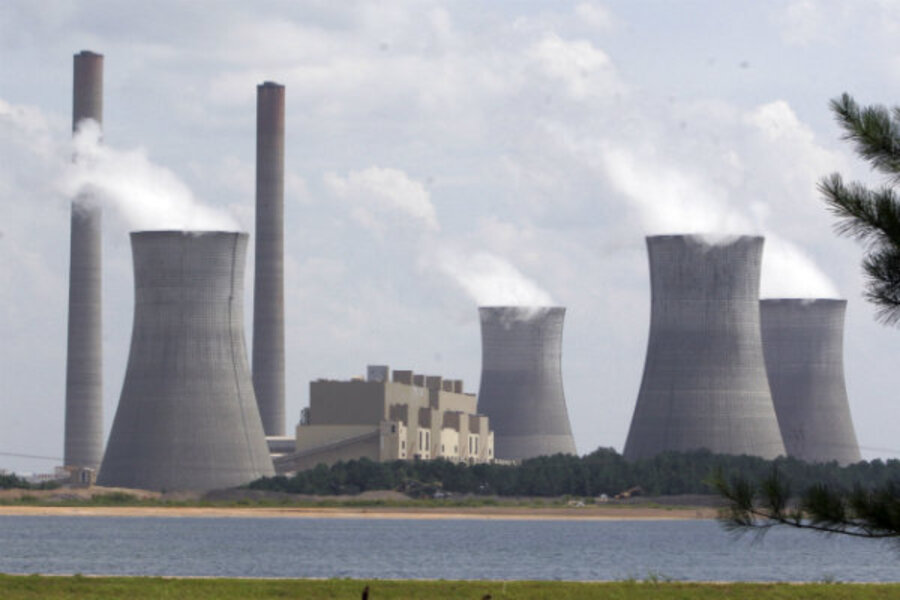US can slow climate change with new carbon-capture technology
Loading...
| New York
Global temperatures are rising faster than scientists thought possible even a few years ago. The Arctic icecap is melting at a rate that few researchers had anticipated, and, most ominously, the permafrost is beginning to thaw, which could release vast amounts of methane, a greenhouse gas 20 times more potent than CO2.
The situation is indeed grave – but not unsolvable. While the majority of scientists agree that we humans have made the problem, new innovations show that we can also solve it. Climate change is a global problem, but the world looks to the US for leadership and solutions.
There are three reasons for this. First, America is the world’s largest economic power. Second, the US has been the main obstructionist at global climate conferences preventing the tough action that needs to be taken to cut the emissions of greenhouse gases and slow the progress of climate change. Finally, and more hopefully, the US remains the world leader in science and innovation.
I saw proof of this when I visited Dr. Klaus Lackner, the chairman of the Earth and Environmental Engineering department at Columbia University in December. He showed me a palm-sized mockup for an “artificial tree” that mimics the photosynthesis of real trees by chemically sucking CO2 out of the air. A single such tree-sized device left standing in the wind, Dr. Lackner told me, would remove one ton a day of carbon from the atmosphere, the equivalent of the greenhouse gases produced by 36 automobiles.
This “carbon capture” technology is not a risky geo-engineering scheme, according to Lackner. It is simply cleaning up after ourselves and repairing the damage that we have already done. He envisions a day when forests of such artificial trees – they cost less than automobiles to manufacture and can be placed anywhere on the face of the earth since C02 is equally dispersed – will make a big dent on the climate problem.
Graciela Chichilnisky, one of the original architects of the Kyoto protocol, and Peter Eisenberger, who founded the Earth Institute at Columbia have developed yet another system that uses the excess heat produced by power plants to remove carbon dioxide from the air. Ms. Chichilnisky told me that she expects capturing and selling CO2 for an array of industrial purposes will more than pay for itself in the coming years.
One use for the greenhouse gas is in enhanced oil recovery, where C02 is pumped into depleted oil wells to release untapped petroleum. The booming global market for such recovery alone is expected to top $800 billion within a decade, according to Chichilnisky.
Carbon capture for commercial purposes could potentially take more CO2 out of the atmosphere than we are currently putting in, while producing a healthy profit, Chichilnisky says. But governments around the world will need to grease the wheels by mandating a carbon market, in which industries are required to pay to remediate the damage that their pollution creates.
It makes sense. With innovative new approaches like carbon capture on the verge of becoming economically viable, a little push from Washington and other world capitals could go a long way toward creating a market-based brake on climate change.
Whether carbon capture or some other developing technology is the answer remains to be seen. But a free-market approach, where different systems could compete on a level playing field, would quickly drive prices down and sort out which technology is the most cost-effective.
Now President Obama has an historic opportunity to push for a mandatory carbon market during his second term, and start cooperating with other countries in aggressive international measures to curb greenhouse gases. The European Union, which already has an emissions trading scheme in place, is an obvious place to seek cooperation.
During the president's previous term, Republicans in Congress shot down his rather half-hearted effort to enact a cap-and-trade law. But if November's election results can be trusted, the public's patience for Republican obstructionism on the environment may have just run out. In the wake of hurricane Sandy, more Americans than ever – 68 percent according to a Rasmussen survey conducted in November – are convinced that climate change is an urgent problem that needs to be addressed. This shift in public opinion may give the president the political space that he needs to push for the tough action that is required.
Then America – and Mr. Obama – can fulfill their role as global leaders. In my lifetime alone, the US sent a man to the moon and helped create an Internet that unites the globe in a worldwide web of instant communication. I have no doubt we can fight climate change.
Richard Schiffman is an environmental journalist who publishes regularly in the Guardian and elsewhere. A longer version by the author describing carbon capture in detail first appeared in the Earth Island Journal.





